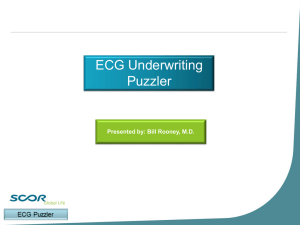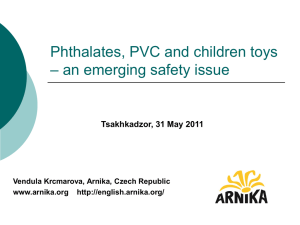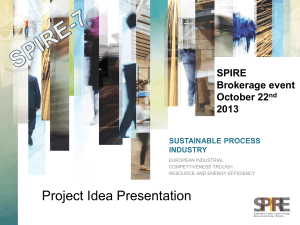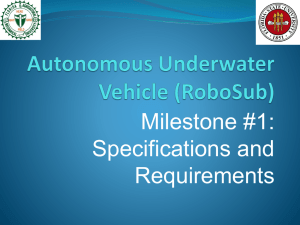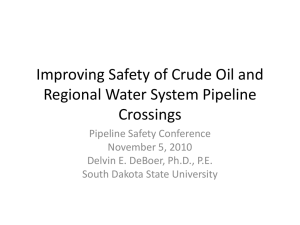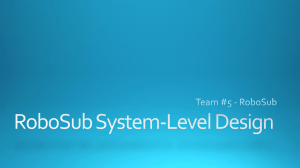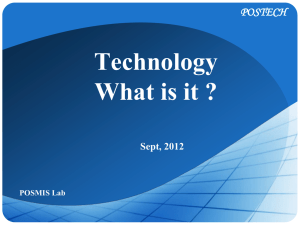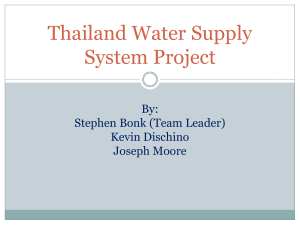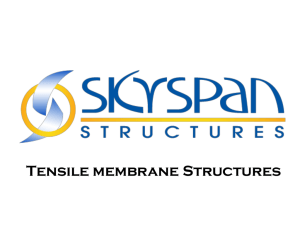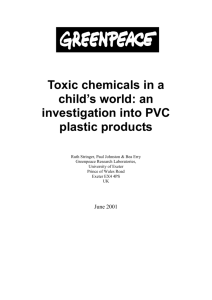- Foro Andino del PVC
advertisement
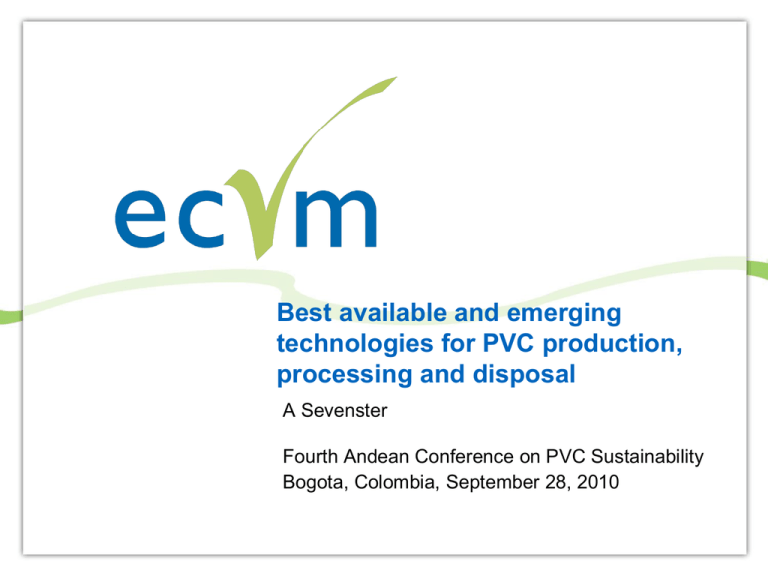
Best available and emerging technologies for PVC production, processing and disposal A Sevenster Fourth Andean Conference on PVC Sustainability Bogota, Colombia, September 28, 2010 Contents of the presentation ● Best available and emerging technologies for PVC – Production and processing – End of life ● Additives – Status of core additives – Developments ● New PVC carbon footprinting & sustainability tool ● (Optional background slides) Eco-profiles, LCA and EPD BAT in PVC manufacturing and processing THREE PILLARS ● Voluntary commitments ● Good Practices Responsible manufacturing Health Environment Safety Some voluntary commitments ● Australia – Industry Product Stewardship commitment launched in October 2002 – Some of the commitments ● Residual VCM in finished resin < 1 ppm: ACHIEVED ● VCM emissions not greater than 50g/tonne PVC: ACHIEVED ● Phase out of cadmium stabilisers by 2003: ACHIEVED ● Phase out of lead stabilisers by 2010: ON TRACK ● Europe (next slide) ● South America – Brazilian pipes and fittings producers committed to replace lead stabilisers by calcium/zinc ● USA – Industry initiatives to phase out lead Voluntary commitments in Europe ● ECVM industry Charters – Voluntary commitments to reduce environmental impact of manufacturing activities ● Target setting for emission limits, essentially EDC and VCM ● Apply Best Available Techniques (associated BAT documents) ● Reviews by an independent third party – VCM and S-PVC (1994), E-PVC (1998) – 3rd verification of VCM/S-PVC Charter and 2nd verification of E-PVC Charter currently in progress – More information on www.pvc.org ● Vinyl 2010 – Refer to presentation by Helmuth Leitner, but as reminder: ● Phase out of cadmium ● Progressive phase out of lead, complete by 2015 ● Phase out of Bisphenol A in polymerisation ● Risk assessments on all phthalates ● Development of recycling Good Practices ● ECVM Annual Health, Safety and Environment Conference – 30 - 40 participants, typically production managerial staff. All companies represented – One and a half day – Review of accidents, incidents and near misses (“True confessions”) – Exchange of information on HSE issues related to manufacturing ● US companies also meet regularly to discuss safety in manufacturing Emerging technologies for PVC production ● Incremental improvements of the established processes – For example recovery of process water ● Environmental impact of current acetylene process worse than ethylene process – Could it become sustainable? ● Raw materials can be obtained from renewable resources – Ethylene from bio-based ethanol (Brazil) or from methanol synthesized from waste (“Methanol to Olefin” processes) – Chlorine obtained from sea salt with electricity from renewable sources BAT for end of life treatment of PVC ● Landfilling to be avoided wherever possible – Unsustainable “solution”, waste of space and resources ● Recycling to be favoured, because it’s best for saving resources and energy but – Collection of sufficiently homogeneous waste streams is an (essentially economic) issue – It can be hampered by standards, regulations (e.g. REACH) and public acceptance ● Energy recovery is an option, but PVC has disadvantages compared to e.g. polyolefins – Constraints on incinerator design/operations to keep corrosion manageable; it is feasible up to a chlorine content of 5-6% – Generation of neutriaisation residues ● Cooperation of the value chain is essential for success Global Warming potential reduction through recycling ● ● ● ● Recent study by PE International The figure depicts the results in terms of Global Warming Potential The diagram clearly demonstrates that incineration carries much higher burdens (3-4kg CO2-eq.) than mechanical recycling “System expansion” refers to the inclusion of new production of PVC with additives (which are different for cable and rigid PVC) Emerging technologies for end-of-life PVC ● Mechanical recycling – Vinyloop/Texyloop (See Vinyl 2010 presentation) – Progress in sorting and separation technologies, allowing to recycle more “difficult PVC waste”: For example Autovinyle in France http://www.autovinyle.com/en_index.html ● Feedstock recycling – Lots of laboratory studies on gasification and pyrolysis, but very few commercially demonstrated processes – High investments ● Energy recovery from waste on PVC production sites – Energy and sometimes HCl recovery ● Recovery of incineration residues – Neutrec (developed by Solvay) – Halosep (developed by Watech/RGS90/Stena with the support of Vinyl 2010) Autovinyle process Manufacturing products from PVC recyclate for dismantled parts (Autovinyle) ELV Collection of PVC parts Densification and micronisation Pévéchouc ® Calendering or injection The Neutrec ® process (Solvay) ● The Flue Gas Cleaning Residues collected in the bag filter are mixed with hydraulic binders, then placed in an aqueous solution with certain additives ● The suspension is filtered ● The insoluble part contains in particular most of the heavy metals. They are solidified into inert matter ● The brine is further purified and reused in the manufacture of sodium carbonate ● See www.neutrec.com The Halosep ® process ● Recovers 98-99 % of the chlorine from incineration flue gas waste residues in the form of salts ● Applicable to Semi-Dry and Wet incineration processes ● Reduces by 50–75 % the amount of neutralisation waste to be disposed to landfills and improves its leaching properties ● The treated waste complies with the leaching limit criteria for heavy metals for non-hazardous waste ● The main product is a salt brine free from dioxins, furans and heavy metals ● Cadmium, zinc and lead can be extracted in various amounts Additives ● Status of core additives – Plasticisers – Stabilisers ● Developments in plasticisers Plasticisers – three main groups: Products LOW molecular weight phthalates SVHC * • DEHP • BBP • DBP • DIBP HIGH molecular weight phthalates non-SVHC Other plasticisers • DINP • DIDP • DPHP • DIUP • DTDP • Adipates • Benzoates • Citrates • DINCH • Others There are ~ 100 plasticisers on the market but Phthalates represent ~ 90% of the WE plasticiser market 15 Plasticisers are mostly used in Flexible PVC products LOW molecular weight phthalates HIGH molecular weight phthalates • Medical (DEHP) • General purpose PVC applications (DEHP) • Adhesives (DIBP) • Cosmetics (DBP/DIBP) • PVC Wire & cable • PVC Flooring & wall covering • PVC Film & sheet • PVC Synthetic leather • PVC Coated fabrics • Automotive Other plasticisers •Toys •Food contact •Sealants •Medical •Niche applications 16 Worldwide Plasticiser Consumption Other Other Other Other Other DINP/DIDP DINP/DIDP DINP/DIDP DINP/DIDP DEHP DEHP DEHP DEHP DEHP represents 50% of the phthalates used Worldwide… 1) 2) …but only 17% of the phthalates used in Europe Notes : Other Plasticisers include Adipates, Trimelliatates, Benzoates, DINCH & Citrates 2) Other Phthalates include Linears, DPHP, DIUP, DTDP, DOTP, DIBP, DBP Source: 2007 Chemical Economics Handbook – SRI Consulting 17 Evolution of Plasticiser Consumption in Europe 80% 70% DINP/DIDP/DPHP 60% Ongoing substitution of classified LMW by non-classified HMW plasticisers 50% 40% 30% DEHP 20% 10% 0% 2001 2002 2003 share of DINP/DIDP/DPHP in total plast. 2004 2005 2006 share of DEHP in total plasticisers 2007 2008 2009 share of non-phth in total plasticisers Source: ECPI 2010 Source: ECPI, 2008 18 Stabilisers ● Cadmium – Not used on EU market anymore (Vinyl 2010) – 100 ppm limit likely to become mandatory for ALL applications – Recycling issue: Hope for a 1000 ppm limit for cadmium originating from recycling, in rigid building applications excluding drinking water pipes ● Tin – Regulatory restrictions for di-butyltin in EU as from 2012 – Industry has anticipated ● Lead – Phase out ahead of Vinyl 2010 schedule – Will be also an issue in recycling ● Lead replaced by calcium/zinc – calcium/organic stabilisers Alternatives to phthalates ● Some commercial non-phthalate options for general purpose use in PVC – Epoxidised Oils (e.g. epoxidised soybean oil): Long term compatibility problems and processability issues – Citrates: Currently limited availability and higher costs. Performance lacking in permanence – Polyesters: Poor processability, higher costs – Terephthalates – Cyclohexanoate diesters: DINCH® – Polyol esters: Danisco’s Grindsted® Soft-N-Safe ● Comparison with phthalates (presentation by D. Naert (ExxonMobil Chemical) on behalf of ECPI at the “PVC Formulation 2009” conference on 16 – 18 March 2009 – Phthalates like DEHP,DINP,DIDP have proven track records of meeting GP plasticiser performance – Main difference between phthalates: level of permanency and processability – Base set for a “General Purpose phthalate” with a maximum index of 10 for each of the 5 key parameters Terephthalates Cyclohexanoate diesters (DINCH®) Polyol esters: Danisco Grindsted® Soft-N-Safe PVC sustainability tool ● Developed by Adisa Azapagic, Haruna Gujba, Anthony Morgan and Heinz Stichnothe – School of Chemical Engineering and Analytical Science, The University of Manchester ● Enables calculations of carbon footprint of different PVC products and processes on a life cycle basis – Cradle to gate – Cradle to grave ● Calculates other environmental impacts ● Calculates value added along supply chains ● Includes case studies and a range of databases New tool to assess PVC sustainability ● Questions explored within the PVC sustainability tool – – – – – What is the carbon intensity of a PVC supply chain/process/product? Where are the ‘hot spots’? What are the low-carbon options for reducing the carbon intensity? What would be the cost? And value added? How would other environmental impacts change? ● Main features of the tool – – – – – Tailored for the PVC industry/supply chains Free of charge Simple to use Integrated case studies Includes data bases ● ● ● ● ● Materials Energy Transport Packaging Waste management – Enables ‘what if’ scenario analysis Built-in case studies and examples Top-level view of the tool Data shown for illustration only Identifying carbon ‘hot spots’ Data shown for illustration only Other environmental impacts ● Acidification ● Eutrophication ● Ozone depletion ● Photochemical smog ● Human toxicity Data shown for illustration only Background slides (optional) ● LCAs remain the basis for scientific assessments of environmental impacts ● High quality data available for plastic resins in general, and PVC in particular Eco-profiles ● Cradle-to-gate Life Cycle Inventories ● Benefits – Essential basis for LCA studies of products – Possibility of environmental benchmarking ● Encouraging environmental improvements in manufacturing ● PlasticsEurope eco-profiles – Average representing the majority of European production – Publicly available at http://lca.plasticseurope.org – Included in the International Reference Life Cycle Data System (ILCD) ● Eco-profiles of PVC resin – 92 % coverage of Western European industry – Collected and calculated in 2005 by IFEU ● Eco-profiles of PVC conversion processes published in 2010 – Pipes and profiles extrusion, sheet calendering and coating, injection molding Results of eco-profiles of PVC resin EPD of PVC resin ● Environmental Product Declarations are socalled ‘Type III environmental declarations’ – Quantified environmental data for a product using predetermined parameters, based on ISO 14040 series – The environmental data may be supplemented by other quantitative and qualitative environmental information ● The PVC EPD were the first to be published under a new EPD programme launched by PlasticsEurope – Defined “Product Category Rules”, i.e. “Set of specific rules, requirements, and guidelines for developing Type III environmental declarations for one or more product categories” – Essentially based on the eco-profiles http://lca.plasticseurope.org EPD results for 1 kg of PVC ● represents the European PVC resin producing companies and is a division of PlasticsEurope. Its membership includes the 13 European PVC resin producers which together account for 100 % of EU 27 production. ECVM is also a leading partner of Vinyl 2010 - the organisation implementing the Voluntary Commitment of the PVC Industry - together with ESPA - representing the stabiliser producers, ECPI - representing the plasticiser producers and EuPC - representing the PVC converters.
